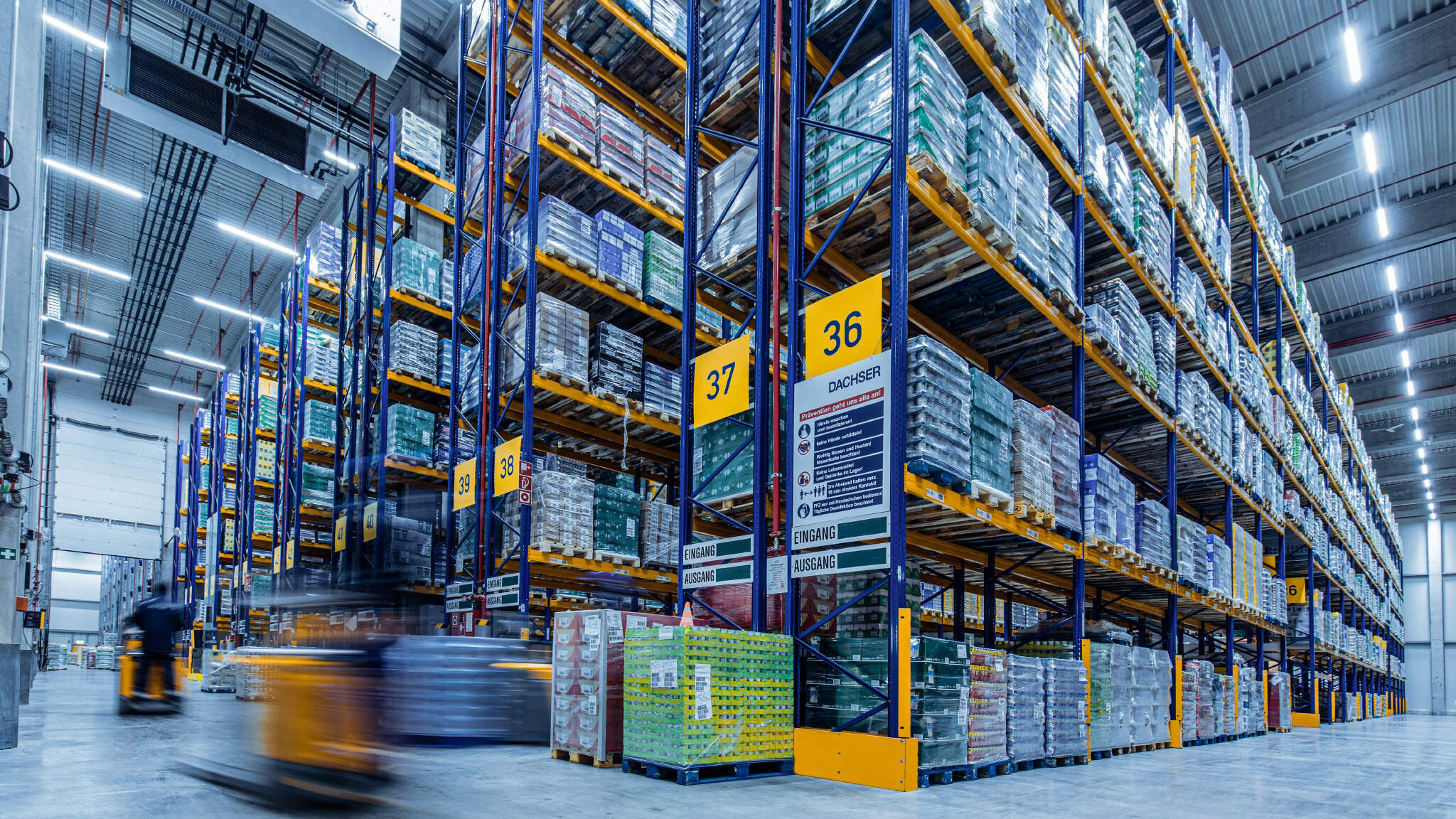Ready to turn insight into action?
We help organisations transform ideas into measurable results with strategies that work in the real world. Let’s talk about how we can solve your most complex supply chain challenges.

Introduction: A Shift in Perspective
2024 was a year of firefighting for many organisations, with leaders focused on managing immediate pressures such as supply chain disruptions, inflation, and geopolitical uncertainty. As the dust settles, 2025 is shaping up to be a year of recalibration. Companies are once again exploring medium to long-term investments to secure a competitive edge in an evolving landscape.
Network optimisation and scenario modelling are pivotal in this shift. These tools allow organisations to analyse, predict, and plan their supply chain strategies more effectively, unlocking cost savings and operational efficiencies across multiple areas.
This article delves into how network optimisation can drive tangible benefits across warehouse labour, freight, warehouse rents, and inventory, enabling organisations to achieve a balance between short-term agility and long-term sustainability.
Understanding Network Optimisation and Scenario Modelling
Network Optimisation involves evaluating an organisation's supply chain and logistics networks to determine the most efficient configuration. This might include decisions about warehouse locations, transport routes, and inventory placement, all aimed at minimising costs and maximising service levels.
Scenario Modelling complements optimisation by allowing businesses to simulate different conditions, such as changes in demand, costs, or constraints. This proactive approach helps leaders make informed decisions in an uncertain environment.
In 2025, organisations leveraging these tools gain the ability to:
- Reduce costs through efficiency improvements.
- Enhance customer satisfaction by improving service reliability.
- Build resilience by stress-testing networks against potential disruptions.
Key Areas of Cost Optimisation
1. Warehouse Labour Spend
Labour remains one of the most significant operating costs in supply chains. Network optimisation identifies opportunities to reduce labour spend by:
- Consolidating Warehouses: Reducing the number of facilities while maintaining service levels can eliminate redundant labour requirements.
- Improving Labour Utilisation: Optimising workflows and scheduling can ensure the workforce is deployed efficiently.
- Leveraging Automation: Network analysis can highlight where investments in automation, such as robotics or advanced WMS (Warehouse Management Systems), could deliver a strong ROI.
Example:
A major FMCG company used network optimisation to consolidate three regional warehouses into one strategically located distribution centre. This move reduced labour costs by 20%, as fewer workers were needed to manage inventory and fulfil orders.
2. Freight Spend
Freight is another high-impact area where optimisation delivers results. By evaluating transport routes, carrier options, and modal choices, organisations can:
- Minimise shipping costs through efficient routing.
- Improve load utilisation, reducing the number of trips required.
- Shift to cost-effective transport modes where feasible, such as rail or sea freight for long distances.
Scenario Modelling in Action:
Businesses can use scenario modelling to assess the impact of fuel price increases or changes in carrier rates, allowing them to secure better contracts or adjust pricing strategies.
Case Study:
A retailer in ANZ re-evaluated its distribution network, switching from road to rail for inter-state deliveries. This reduced freight costs by 15% and lowered carbon emissions, aligning with sustainability goals.
3. Warehouse Rents
In 2025, skyrocketing commercial property prices and rising rental rates are pressing issues for businesses. Network optimisation can help mitigate these costs by:
- Identifying underperforming warehouses that could be closed or relocated.
- Assessing lease agreements and exploring renegotiation or alternative options.
- Exploring shared warehousing models or co-location with partners to reduce fixed costs.
Data-Driven Lease Decisions:
Scenario modelling can simulate the long-term financial impact of staying in a high-rent facility versus moving to a more affordable location, considering factors like transport cost implications and service levels.
4. Inventory and Working Capital
Inventory optimisation is a cornerstone of working capital management. Excess stock ties up capital and increases carrying costs, while stockouts can damage customer relationships. Network optimisation addresses this by:
- Balancing inventory levels across the network to minimise overstocking and understocking.
- Positioning inventory closer to demand centres to reduce lead times and safety stock requirements.
- Improving demand forecasting to align inventory with actual market needs.
Advanced Tools:
AI-powered forecasting and optimisation tools can further enhance accuracy, helping businesses dynamically adjust inventory in response to changes in demand or supply.
Real-World Impact:
A healthcare company used network optimisation to centralise its inventory at a regional distribution hub. This reduced inventory holding costs by 25% while maintaining 98% service levels.
Why 2025 is the Year for Medium to Long-Term Investments
Several factors are driving the renewed focus on long-term planning and network optimisation in 2025:
- Economic Stability:
After navigating economic turbulence in 2024, businesses now have a clearer outlook for growth and investment opportunities. - Technological Advancements:
The proliferation of digital tools, such as AI-driven analytics, cloud-based platforms, and low-code/no-code solutions, makes it easier and more cost-effective to implement network optimisation projects. - Sustainability Pressures:
Regulatory and consumer demand for sustainable practices are pushing organisations to optimise their supply chains to reduce emissions and waste. - Competitive Advantage:
Companies that proactively invest in their networks can position themselves ahead of competitors, particularly as supply chain resilience becomes a key differentiator.
Challenges and How to Overcome Them
While network optimisation offers substantial benefits, it is not without challenges. Common obstacles include:
- Data Quality Issues: Incomplete or inaccurate data can lead to suboptimal outcomes.
- Resistance to Change: Employees and stakeholders may resist significant changes to established processes or locations.
- Cost of Implementation: Upfront investment in technology and expertise can be a barrier for some organisations.
Strategies for Success:
- Conduct thorough data audits and invest in data cleaning processes.
- Engage stakeholders early to build buy-in and address concerns.
- Partner with experienced consultants, such as Trace Consultants, to guide implementation and ensure ROI.
The Role of Scenario Modelling in Resilience
In addition to cost optimisation, scenario modelling enhances resilience by helping businesses prepare for various eventualities, such as:
- Sudden demand spikes or drops.
- Disruptions in supply routes.
- Changes in regulatory or market conditions.
By simulating these scenarios, leaders can develop contingency plans that minimise disruption and maintain business continuity.
The ROI of Network Optimisation
Organisations that invest in network optimisation and scenario modelling typically see a strong return on investment. Benefits include:
- Cost Savings: Across labour, freight, rent, and inventory.
- Improved Service Levels: Faster delivery times and higher accuracy.
- Resilience: Greater ability to navigate disruptions and adapt to changes.
How Trace Consultants Can Help
At Trace Consultants, we specialise in helping businesses navigate complex supply chain challenges. Our expertise in network optimisation and scenario modelling enables organisations to unlock cost savings and build resilient, efficient networks.
We work closely with clients to:
- Assess current network performance.
- Develop data-driven optimisation strategies.
- Implement solutions tailored to business needs.
As 2025 unfolds, business leaders are seizing the opportunity to pivot towards strategic, medium to long-term investments. Network optimisation and scenario modelling are essential tools in this journey, enabling organisations to reduce costs, enhance efficiency, and build resilience.
The question is: Are you ready to optimise your network and secure a competitive advantage for the future?
Ready to turn insight into action?
We help organisations transform ideas into measurable results with strategies that work in the real world. Let’s talk about how we can solve your most complex supply chain challenges.








